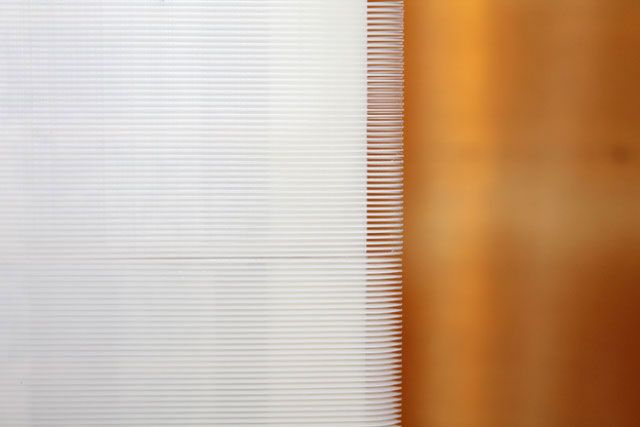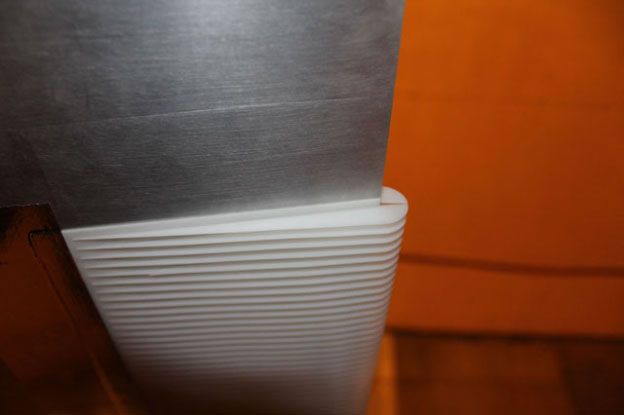Many species of owl are able to hunt in effective silence by suppressing their noise at sound frequencies above 1.6 kilohertz (kHz)—which includes the range where human hearing is most sensitive.
A team of researchers studying the acoustics of owl flight is working to pinpoint the mechanisms that accomplish this virtual silence to improve man-made aerodynamic and aeroacoustic design—of wind turbines, aircraft, underwater vehicles, and automobiles.

Read the full version of this story in the Lehigh Engineering News Center.
Through physical experiments and theoretical modeling, the team has developed a 3D-printed wing attachment that reduces wind turbine noise by a remarkable 10 decibels, using the downy canopy of owl feathers as inspiration—without negatively impacting aerodynamics.
“We have investigated how such a design can reduce roughness and trailing-edge noise,” says Justin Jaworski, assistant professor of mechanical engineering and mechanics. “In particular, trailing-edge noise is prevalent in low-speed applications and sets the minimum noise level. The ability to reduce wing noise has implications beyond wind turbines, as it can be applied to other aerodynamic situations such as the noise created by air flowing past automobile sideview mirrors and sunroofs.”
Jaworski began studying owl wings in 2011 with Nigel Peake, a professor of applied mathematics at the University of Cambridge, where Jaworski was a National Science Foundation international research fellow.
Three features, says Jaworski, seem to account for the owl’s stealthy flight.
He holds up a long, brown and elegant owl wing and offers an explanation. The wing’s leading edge, the part closest to the owl’s head, he points out, is made of stiff, evenly spaced, mostly aerodynamic fibers that reduce noise.
The fluffy upper surface of the wing is made of a down feather material that is similar in texture to commercial velvet. When examined under a microscope, says Jaworski, this structure looks like vertical strings with interlocking barbs at their tops. This mesh creates a buffer layer that also stifles sound.
Arguably the most important feature of the wing is its porous and compliant trailing edge. This edge is usually where the most noise is generated. In contrast to the feathers on the trailing edge of a duck or eagle wing, which are very stiff, the trailing edge feathers on a large owl’s wing are flexible and provide significant noise reduction.
“The trailing back edge is the predominant noise source for any blade that passes through the air—not only the owl, but also aircraft and wind turbines,” says Jaworski. “If you can eliminate the noise there you can create a lot of benefits.”
Cleared for takeoff
The team’s findings have been published in two recent papers: “Bio-inspired trailing edge noise control" in the American Institute of Aeronautics and Astronautics Journal and "Bio-inspired canopies for the reduction of roughness noise" in the Journal of Sound and Vibration.
The research team—from Lehigh, Virginia Tech, Florida Atlantic University and University of Cambridge—specifically looked at the velvety down that makes up the upper wing surface of many large owls. This unique physical attribute, even among birds, contributes significantly to owls' noiseless flight. As seen under a microscope, the down consists of hairs that form a structure similar to that of a forest. The hairs initially rise almost perpendicular to the feather surface but then bend over in the flow direction to form a canopy with interlocking barbs at the their tops—cross fibers.
The team has created a 3D-printed plastic attachment consisting of small "finlets" that can be attached to an airfoil or wing. The finlet invention may be retrofitted to an existing wing design and used in conjunction with other noise-reduction strategies to achieve even greater noise suppression.
In their experiments, the researchers simulated air flows using the Virginia Tech Stability Wind Tunnel.
"The most effective of our designs mimics the downy fibers of an owl's wing, but with the cross fibers removed," says Jaworski. "The canopy of the owl wing surface pushes off the noisy flow. Our design mimics that but without the cross fibers, creating a unidirectional fence—essentially going one better than the owl."



